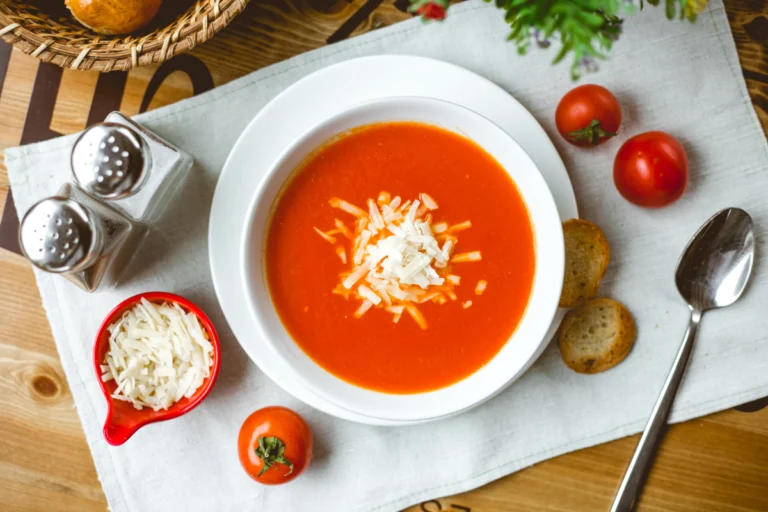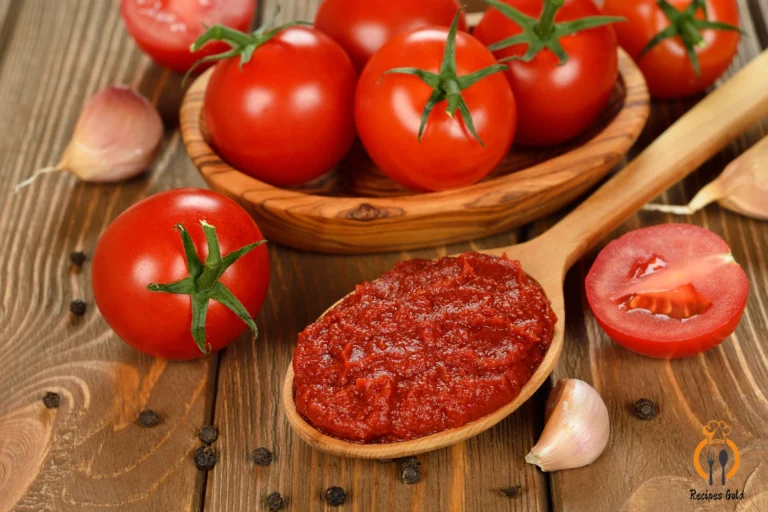Fresh Kirby Cucumber: Benefits, Growing, and Recipes
In the realm of culinary adventures and health-conscious choices, Kirby cucumbers carve out a special niche, sparking curiosity and delight among food lovers and gardeners alike. With their distinct crunchy texture and versatility, questions like “Are Kirby cucumbers good to eat?” emerge, inviting us to explore the depth of this beloved vegetable. This article delves into the essence of Kirby cucumbers, from their nutritional profile to their unparalleled suitability for pickling and beyond. As we embark on this journey, we’ll uncover not only the health benefits and culinary uses of Kirby cucumbers but also provide insights into growing them in your garden, ensuring that every reader finds something to take away, whether you’re a seasoned chef, a home gardener, or someone exploring healthy eating options.
Unveiling Fresh Kirby Cucumbers
Discovering Kirby Cucumbers
Kirby cucumbers shine in the vegetable world, especially for pickling. These small, sturdy vegetables are easily recognized by their distinctive bumps. Beyond pickling, their crunch adds a refreshing touch to any dish.
A Brief History
The story of the Kirby cucumber is as rich as its flavor. Originating with a mission to perfect pickling cucumbers, Kirbys have made a name for themselves. They owe their name to an influential figure in their development. Over time, Kirbys have become a symbol of quality and taste in the culinary world.
Kirby cucumbers stand out for their robust nature and unique appearance. They invite us to explore what makes them so special. From their intriguing history to their nutritional and culinary versatility, Kirbys are more than just good—they are exceptional. Let’s dive into the world of Kirby cucumbers, discovering the secrets of their popularity in both kitchens and gardens.
The Nutritional Power of Fresh Kirby Cucumbers
Fresh kirby cucumber aren’t just a treat for the taste buds; they’re also a boon for your health. Let’s slice into the nutritional benefits these crunchy cucumbers bring to the table.
Kirby Cucumbers: A Nutrient Powerhouse?
Indeed, Fresh kirby cucumber are packed with goodness. Low in calories but high in essential vitamins and minerals, they’re a healthy addition to any diet. Rich in vitamin K, they support bone health and blood clotting. They also provide a dose of vitamin C, boosting the immune system and skin health.
Moreover, Kirbys offer potassium, aiding in heart function and blood pressure regulation. Their high water content ensures hydration, making them perfect for refreshing snacks or salads. Plus, the fiber in their skin promotes digestive health.
Health Impacts
Including Kirby cucumbers in your diet has several health benefits. Their antioxidant properties help fight inflammation and reduce the risk of chronic diseases. The cucurbitacins in cucumbers may also have anti-cancer effects.
Eating Kirbys can aid in weight management too. Their low calorie count and high water content make them a filling, nutritious snack option. So, whether you’re eating them raw, pickled, or in a dish, Kirby cucumbers are a great choice for maintaining a balanced, healthy diet.
Kirby cucumbers are indeed a nutrient powerhouse. They not only elevate the flavors of our meals but also contribute to our overall health and wellness. Next, we’ll delve into the diverse culinary uses of Kirby cucumbers, showcasing their versatility beyond just being a key ingredient in pickles.
Kirby Cucumbers in the Kitchen
Kirby cucumbers are culinary chameleons, seamlessly fitting into a wide array of dishes. Their unique characteristics make them a favorite among chefs and home cooks alike.
From Pickles to Salads
While Kirby cucumbers are synonymous with pickling, their culinary journey doesn’t end there. Their firm texture and mild flavor make them ideal for a variety of dishes. Fresh Kirbys add a crunchy, hydrating element to salads, giving each bite a refreshing zest. They’re also perfect for quick snacks, sliced and sprinkled with a dash of salt or dipped in hummus.
Beyond raw applications, Kirbys can be stir-fried, sautéed, or included in cold soups for a burst of freshness. Their versatility extends to garnishes, adding a visually appealing and tasty component to dishes.
Taste Test: Kirby vs. Other Varieties
When it comes to flavor, Kirby cucumbers hold their ground. They’re less bitter than some other varieties, which makes them more palatable when eaten raw. This mildness also allows them to absorb flavors well when pickled, resulting in a more nuanced taste profile compared to pickles made with other types of cucumbers.
Kirby cucumbers stand out for their adaptability in the kitchen, from their starring role in pickles to their refreshing presence in raw dishes. Their unique blend of crunchiness, mild flavor, and nutritional benefits make them a valuable ingredient in any culinary endeavor. Next, we’ll explore how to cultivate these versatile vegetables in your own garden, sharing tips for a bountiful harvest.
Growing Your Own Kirby Cucumbers
Cultivating Kirby cucumbers in your garden is a rewarding endeavor that brings the freshness of these crunchy delights right to your table. Let’s explore how to grow Kirby cucumbers successfully.
Gardening Tips for Kirby Cucumbers
Soil and Sunlight: Kirby cucumbers flourish in well-drained, fertile soil with a pH of around 6.0 to 6.8. They crave sunlight, requiring at least six to eight hours of direct sun daily. Ensuring these conditions can lead to a healthy, vigorous crop.
Planting: Sow seeds directly into the ground after the last frost when the soil has warmed. Plant them about ½ inch deep, spacing them 2 to 3 feet apart in rows that are 4 to 6 feet apart. For trellised cucumbers, you can space plants closer, about 18 inches apart.
Watering: Consistent watering is key, especially during flowering and fruit set. Kirby cucumbers need about 1 inch of water per week, whether from rainfall or irrigation. Avoid overhead watering to reduce the risk of leaf diseases.
Feeding: Apply a balanced fertilizer at planting and again as fruits begin to form. Kirbys are heavy feeders but be careful not to over-fertilize, as this can encourage leaf growth at the expense of fruit production.
Common Challenges and Solutions
Pests and Diseases: Cucumber beetles, aphids, and powdery mildew are common foes. Use floating row covers to protect young plants, remove infected leaves promptly, and choose disease-resistant varieties when possible.
Pollination Issues: Kirbys require pollination to produce fruit. If you notice flowers dropping without fruit formation, consider attracting more pollinators to your garden with flowers or manually pollinating the flowers.
Growing Kirby cucumbers can be a straightforward and satisfying process. With the right care, you can enjoy a plentiful harvest of crunchy, flavorful cucumbers perfect for pickling or fresh eating. Whether you’re a seasoned gardener or a newbie, Kirbys offer a versatile and rewarding gardening project. Next, we will answer some of the most commonly asked questions about Kirby cucumbers, helping to clear up any confusion and provide helpful insights for cucumber enthusiasts.
Environmental Impact and Sustainable Practices
As the interest in sustainable living grows, it’s important to consider the environmental impact of our gardening and culinary choices. Kirby cucumbers, like all crops, play a role in this dynamic. Let’s delve into sustainable practices for growing and consuming Kirby cucumbers.
Eco-Friendly Gardening with Kirby Cucumbers
Companion Planting: Growing Kirby cucumbers alongside beneficial companions like marigolds, nasturtiums, or beans can naturally deter pests, reducing the need for chemical pesticides.
Organic Practices: Opting for organic fertilizers and pest control methods minimizes the environmental footprint of cultivating Kirby cucumbers. Compost and natural pest deterrents can enrich soil health and promote biodiversity.
Water Conservation: Employing drip irrigation or soaker hoses ensures water is delivered directly to the roots of the plants, minimizing waste and reducing the water footprint of your Kirby cucumber plants.
Reducing Food Miles with Homegrown Kirbys
Growing Kirby cucumbers in your backyard or community garden cuts down on food miles, the distance food travels from production to consumer, which reduces greenhouse gas emissions associated with transportation. Harvesting Kirbys at home not only ensures freshness but also supports a more sustainable food system.
The Role of Kirbys in a Sustainable Diet
Incorporating homegrown or locally sourced Kirby cucumbers into your diet supports sustainable eating practices. By choosing Kirbys, particularly those grown using eco-friendly methods, you contribute to a more sustainable and resilient food system.
Sustainable practices in growing and consuming Kirby cucumbers highlight the importance of mindful gardening and eating habits. These practices not only benefit the environment but also enhance the nutritional value and taste of the cucumbers we enjoy. As we continue to seek ways to live more sustainably, considering the impact of our gardening choices is a step towards a healthier planet and a more resilient food system.
Preserving and Extending the Bounty
After a successful harvest, extending the shelf life of Kirby cucumbers through preservation is a fantastic way to enjoy their crispness and flavor year-round. Let’s explore some methods for preserving Kirby cucumbers and tips for reducing waste.
Methods of Preservation
Pickling: The most traditional method, pickling Kirbys not only extends their shelf life but also enhances their flavor. Experimenting with different spices and vinegar can yield a variety of tasty results.
Freezing: While not as common due to texture changes, freezing is an option for Kirbys intended for use in smoothies or chilled soups. Flash freezing sliced cucumbers on a tray before transferring them to airtight containers can preserve them for several months.
Dehydrating: Dried cucumber chips can be a novel snack or salad topping. Thinly slice Kirbys, season as desired, and dehydrate until crispy. Store in a cool, dry place in airtight containers.
Reducing Food Waste
Composting: Utilize any inedible parts of the cucumber, like overly mature seeds or peels, in your compost bin. This returns nutrients to the soil, promoting a healthy garden ecosystem.
Regrowing: Save the seeds from your Kirby cucumbers for planting next season. Some gardeners also experiment with regrowing cucumbers from cuttings, although this method may require more care.
Community Sharing: Share your surplus harvest with neighbors, friends, or a local food bank. This not only reduces waste but also strengthens community bonds and ensures that everyone can enjoy the fresh taste of homegrown cucumbers.
Preserving Kirby cucumbers allows us to extend the enjoyment of our harvest and contributes to a more sustainable consumption pattern. By employing these preservation methods and reducing waste, we can make the most of our cucumber bounty while being mindful of our environmental impact.
FAQs about Fresh Kirby Cucumbers
In the world of Kirby cucumbers, several questions frequently crop up. Let’s address some of the most common queries to provide clarity and insights.
Can Kirby cucumbers be eaten raw?
Absolutely! While Kirby cucumbers are renowned for their pickling prowess, they are equally delicious when consumed raw. Their crisp texture and mild flavor make them a refreshing snack or a crunchy addition to salads. Eating them raw also ensures you get the full nutritional benefits they offer.
What makes Kirby cucumbers ideal for pickling?
Kirby cucumbers are the stars of the pickling world for several reasons. Their firm flesh ensures they remain crisp after the pickling process, unlike other varieties that might soften. Moreover, their small size and bumpy skin allow pickling brine and flavors to permeate more effectively, creating a delightful taste and texture.
How do Kirby cucumbers compare nutritionally to other cucumber varieties?
Nutritionally, Kirby cucumbers are similar to other cucumber varieties, offering hydration, vitamins, minerals, and fiber. What sets them apart is their skin, which is often consumed due to its palatable texture and additional fiber content. Regardless of the type, cucumbers are a healthy addition to any diet.
Any tips for storing Kirby cucumbers to maintain freshness?
To maximize freshness, store Kirby cucumbers in the crisper drawer of your refrigerator. They’re best used within a week of purchase or harvest. For pickled Kirbys, ensure they are stored in an airtight container in the refrigerator to keep them crisp and delicious.
These FAQs aim to enhance your understanding and appreciation of Kirby cucumbers. Whether you’re pickling, snacking, or simply curious, Kirbys offer a world of culinary and gardening delight. As we conclude our exploration of Kirby cucumbers, remember that these versatile vegetables are more than just good to eat—they’re a crunchy, nutritious, and flavorful addition to a wide range of dishes.
Conclusion
Throughout our exploration of Kirby cucumbers, we’ve peeled back the layers to reveal the multifaceted nature of this beloved vegetable. From their nutritional benefits and versatile culinary uses to tips for cultivating them in your own garden, it’s clear that Kirby cucumbers are more than just a staple for pickling enthusiasts. They’re a crunchy, flavorful, and healthful addition to any meal or snack.
Kirby cucumbers embody the joy of gardening and the delight of discovery in the kitchen. Whether you’re a seasoned gardener or a culinary adventurer, these cucumbers offer a world of possibilities. They invite us to experience the satisfaction of growing our own food and the pleasure of tasting the fruits of our labor.
In conclusion, Kirby cucumbers are indeed good to eat, whether enjoyed fresh, pickled, or as part of a creative culinary creation. Their distinct qualities—notably their crisp texture, mild flavor, and nutritional profile—make them a valuable ingredient in any diet. As we close this chapter on Kirby cucumbers, let’s carry forward the appreciation for this versatile vegetable, exploring new recipes, gardening techniques, and ways to share the crunchy delight of Kirbys with others.
Thank you for joining us on this journey through the world of Kirby cucumbers. May your cucumbers be crunchy, your pickles flavorful, and your gardens fruitful.







